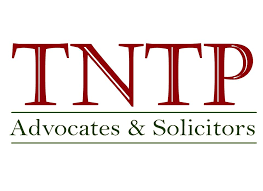The methods of realizing mortgaged assets can be agreed upon by the parties when entering into the mortgage contract, or agreed upon when they need to realize the mortgaged assets. The agreement will be prioritised for application. Article 303 of the Civil Code 2015 stipulates four methods of realizing mortgaged assets that parties can agree to apply: i) Put collateral up for an auction; ii) The mortgagee sells the assets themselves; iii) The mortgagee accepts the mortgaged assets themselves to replace the performance of the obligations of the mortgagor; iv) Other methods (such as offsetting the debt obligation). If there is no agreement on the method of realizing mortgaged assets, the assets are auctioned, except where the law provides otherwise. In this article, TNTP will analyze the methods stipulated in the Civil Code 2015.
1. Put collateral up for an auction
If the parties agree on realizing the mortgaged assets by auction and have a separate agreement on the auction procedures, the auction company, the company will then realize the assets according to this agreement. If there is no separate agreement, it will be realized according to the legal regulations on asset auctions. The auction of mortgaged assets must ensure the publicity and transparency of the asset-realizing process (providing full information related to the assets auctioned, the auction session and the sale price of the asset always being equal to or higher than the starting price determined, and the asset sale procedures being conducted professionally).
In practice, the mortgagee must initiate a lawsuit in the competent People’s Court to request the enforcement authority to seize and sell the mortgaged assets. After the judgment or decision takes effect, the mortgagee must continue to submit a request for execution to the competent enforcement authority. Subsequently, the enforcement authority will enforce the seizure of assets to transfer the seized assets to the auction organization for sale.
2. Self-sale by the mortgagee
In this case, the sale price must be agreed upon by all parties to avoid a situation where one party “underprices” and benefits unfairly from the realizing of the assets. The parties may request an organization to appraise the value of the assets as a basis for determining the sale price. This method can only be implemented with the agreement of the parties, as if the mortgagee proceeds to sell the assets and the mortgagor does not perform the procedures for transferring ownership of the assets to the buyer, the transfer cannot be completed.
3. Acceptance of the mortgaged asset by the mortgagee
The mortgagee is entitled to accept the mortgaged asset itself to replace the performance of the obligations of the mortgagor if there is an agreement when establishing the secured transaction or with the written consent of the mortgagor. If the value of the mortgaged asset is greater than the value of the secured obligation, the mortgagee must pay the value difference to the mortgagor; if the value of the mortgaged asset is less than the value of the secured obligation, the unpaid portion of the obligation becomes unsecured. The mortgagor must transfer ownership of the asset to the mortgagee as prescribed by law. From a legal perspective, this method is quite effective as it saves time and costs to realize mortgaged assets, but in reality, this method is not easy to implement as the mortgagee may be restricted from accepting the transfer of assets, or the mortgagor does not comply with the agreed obligations, making it difficult for the mortgagee to transfer ownership.
4. Other methods
The parties may agree on another method of realizing the mortgaged assets besides the methods mentioned above, as long as this choice is in accordance with legal regulations. For example, the parties can agree that the mortgagee sells the mortgaged asset to offset the debt. In reality, the parties can not agree on the realizing of mortgaged assets, the mortgagee only has the option to file a lawsuit in the competent People’s Court and continue to request enforcement after the court’s judgment or decision. This method must comply with the procedures and regulations of civil procedural law, enforcement law, and other relevant laws.
This is TNTP’s article on “Legal regulations on the methods of realizing mortgaged assets”. We hope this article is useful to our readers.
Sincerely,







